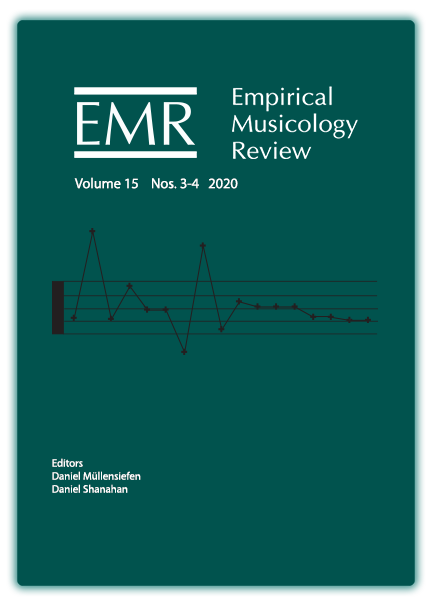Historical Trends in Expressive Timing Strategies: Chopin's Etude, Op. 25 no. 1
DOI:
https://doi.org/10.18061/emr.v15i3-4.7338Keywords:
performance practice, microtiming, rubato, Chopin, Etude Op. 25 no. 1, style analysisAbstract
Studies of early 20th-century performance practice tend to focus on features that are alien to late 20th- and early 21st-century ears. Empirical analysis of timing in recordings of Chopin's Etude, Op. 25 no. 1—a piece for which performance style has remained relatively static—suggests how some foundational rules of phrasing and expressive nuance have changed over the history of recorded music. Melody note onsets were marked manually in 127 commercial recordings dating from 1909 to 2016. Overall, the data do not show an increase or decrease over time in the amount of tempo fluctuation. Independently of a tendency to use slower tempi, pianists changed the way they employ rubato. Several factors contribute to a trend whereby the fourth beat is lengthened at the expense of the second and third beats: an increase in phrase-final lengthening, an increase in the use of tempo arching for shorter groups of measures, and a tendency to delay the arrival of an accented dissonance or change of harmony instead of lengthening the melody inter-onset interval that contains it. The data illustrate nearly imperceptible shifts in interpretation and suggest that some practices thought to be the bedrock of expressive performance may be historically conditioned.Published
How to Cite
Issue
Section
License
Copyright (c) 2021 Michael Rector

This work is licensed under a Creative Commons Attribution-NonCommercial 4.0 International License.


